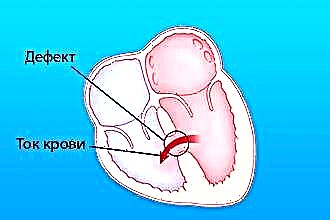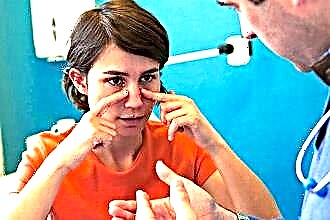In his television programs and articles Komarovsky E.O. more than once touched upon the topic of otitis media in children. This is no coincidence, since this pathology is faced by 90% of the population, especially under the age of five. The greatest spread of otitis media in this age group is due to the structure of the child's hearing organ, as well as a number of other accompanying factors.

Inflammation of the middle ear is extremely rare in its own right, especially among children.
Doctor Komarovsky considers otitis media in infants to be a secondary disease. Most often this is the result of complications of influenza, other acute respiratory viral infections, and childhood infectious diseases. Any pathology accompanied by swelling of the nasopharyngeal mucosa can lead to inflammation of the middle ear.
The short auditory tube, typical of a child's body, helps germs and mucus from the nasal cavity to easily penetrate into the middle ear, causing inflammation. The narrowing of the Eustachian tube is achieved, in addition to the production of mucus and swelling, by the presence of enlarged adenoids, squeezing it from the outside. This leads to a violation of the drainage function of the auditory tube and the development of inflammation, tubootitis in it.
Clinical symptoms
Doctor Komarovsky tubo-otitis in children considers that the pathological condition that leads to the development of otitis media in a child. The eustachian tube narrowed as a result of a pathological process interferes with the normal functioning of the middle ear, leading to the development of stagnation and inflammation in the tympanic cavity. The performed otoscopy allows you to detect the initial signs of inflammation at this stage, which corresponds to catarrhal otitis media. Thus, tubo-otitis, or Eustachitis, is a catarrhal otitis media that developed as a result of a violation of the patency of the Eustachian tube.
Komarovsky catarrhal otitis media in children is described as follows:
- The condition is characterized by ear congestion, which may be relieved by yawning or swallowing saliva;
- there is a decrease in hearing or autophony, that is, the resonance of one's own voice in the affected ear.
As for the pain syndrome, which is a pathognomonic sign of any otitis media, its severity can vary from insignificant to very intense. The general condition of the child is disturbed with catarrhal otitis media slightly. Temperature readings are within subfebrile numbers.
If no measures are taken to improve the drainage function of the auditory tube, congestion in the middle ear leads to the development of inflammation. Exudate forms and accumulates in the tympanic cavity, and catarrhal otitis media is transformed into exudative otitis media in a child. Komarovsky E.O. believes that the correct actions taken at each stage of otitis media can lead to regression of clinical manifestations and recovery.
that the correct actions taken at each stage of otitis media can lead to regression of clinical manifestations and recovery.
It is very important for the diagnosis and prescription of treatment to be consulted by an ENT doctor and an otoscopy performed by him. This diagnostic method allows you to determine the disease itself, to find out the condition of the tympanic membrane, which, with the development of exudative otitis media, is concave, and its integrity is not compromised. However, the specialist can even determine the level of exudate formed in the middle ear cavity, which varies depending on the position of the patient's body.
This instrumental diagnostics is important, since the choice of drugs, according to all experts, including Komarovsky E.O., depends on the condition of the tympanic membrane.
Nonsteroidal anti-inflammatory drugs, some antibiotics, and ethyl alcohol are toxic to the auditory nerve when applied topically in the form of ear drops.
A perforated eardrum is a contraindication to the use of such funds.
According to Komarovsky, purulent otitis media in children develops if treatment was started out of time, and there is also concomitant pathology from the ENT organs. In this case, thickening of the mucous exudate in the tympanic cavity occurs and its transformation into purulent contents.
This course of the disease is characterized by a slightly different symptomatology. First of all, there is a more pronounced pain syndrome. With a significant severity of the process, there may be complaints that are characteristic not only of inflammation of the middle ear, but also of the internal one, such as nausea, vomiting, dizziness, and impaired coordination. The phenomena of intoxication in acute purulent otitis media are more pronounced. The increase in body temperature can reach 39 degrees.
The otoscopic picture is characterized by the presence of an eroded tympanic membrane protruding into the cavity of the external auditory canal. After some time, a spontaneous rupture of it may occur, and purulent contents will appear in the lumen of the external auditory canal. In this case, they speak of a perforated stage in the course of acute purulent otitis media.
Perforation of the tympanic membrane occurs under the influence of increasing pressure of purulent contents. According to the expert, this should be taken calmly. Within a few days, the resulting hole is scarred, and the hearing returns to normal within the next 2-3 months. The scar on the eardrum does not interfere with the functioning of the hearing organ.
Treatment principles

Regarding how to treat otitis media in children, Komarovsky E.O. proceeds from the cause of the development of the disease. Since the leading role in the development of otitis media is played by impaired patency of the auditory tube due to its swelling and the formation of mucus, the first priority is the use of vasoconstrictor drops in the nose. In children, sanorin, naphthyzin, galazolin can be used in an appropriate dosage.
In addition, doctor Komarovsky E.O. treatment of otitis media in a child suggests combining with measures aimed at preventing thickening of the discharge from the nose. For this, it is recommended to carry out the following actions:
- compliance with the temperature regime in the room at a level not higher than 20 degrees;
- regular wet cleaning of the premises;
- combating household dust;
- drinking plenty of fluids.
According to expert Komarovsky E.O., the treatment of purulent otitis media in infants at the pre-perforated stage and perforated is different.
The presence of suppuration is an indication for the cancellation of drugs that have an ototoxic effect and the need to use antibiotics to treat ear inflammation.
According to the sensitivity of pathogens to antibacterial agents, preference is given to drugs from the amoxicillin group. In favor of the appointment of this drug is evidenced by its presence in various dosage forms, allowing it to be used even in infants.
Since otitis media is accompanied by severe pain syndrome, paracetamol is used internally to reduce these sensations and improve the patient's condition. In addition, ear drops containing a local anesthetic or corticosteroids can be used to achieve analgesic effects, which can also help relieve pain.
The use of complex drugs should take place under the direct supervision of an ENT doctor, since they may contain ototoxic components.
 Their use with a perforated eardrum is contraindicated.
Their use with a perforated eardrum is contraindicated.
Attitude towards warming procedures
Concerning the use of physiotherapeutic procedures for the treatment of otitis media in children, the opinion of Komarovsky E.O. definitely negative.He explains this, on the one hand, by the unproven positive effect of these thermal procedures. On the other hand, the use of such measures in a child can cause a reaction that is opposite to the expected one. During the period of acute purulent otitis media, warming procedures are contraindicated even in adult patients.
For children, the doctor advises to insert a cotton turunda into a sore ear or put on a hat. These procedures are performed not for the purpose of additional warming of the ear, but for its immobilization. Any touch to the affected organ causes an increase in pain.
Disease prognosis
Frequent otitis media in a child Komarovsky E.O. considers it to be related to the individual anatomical features of the patient. In the presence of a shorter and narrower auditory tube, the risk of developing otitis media after ARVI, accompanied by the formation of mucus in the nasopharynx, increases. However, with age, the shape and size of the Eustachian tube may change, which will prevent infection from entering the middle ear in this way. Since another cause of frequent otitis media in a child can be enlarged adenoids, compressing the passage of the auditory tube, the performed surgical intervention can significantly improve the situation.
Otitis media diagnosed in time in a child Komarovsky E.O. considers it not too much of a problem, since even without the use of antibiotics, recovery occurs in the vast majority of cases. However, the presence of purulent otitis media is dangerous with the possibility of developing such serious complications as meningitis or brain abscess. In this regard, direct supervision by a specialist throughout the treatment is extremely important.



